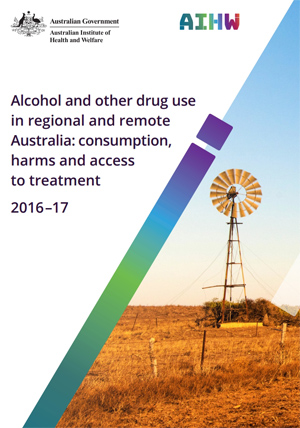
March 15, 2019
People who live in regional or remote areas use drug and alcohol treatment services at a higher rate than those in major cities … and they generally travel for longer to do so.
A report released on Friday by the Australian Institute of Health and Welfare (AIHW) said about one in every 153 people seek treatment in regional and remote areas, compared with about one in 171 in major cities.
“In over a quarter of drug and alcohol treatment episodes involving people in regional and remote areas, the client travelled one hour or longer, compared with about 1 in 10 clients in major cities,’ AIHW spokesperson Moira Hewitt said.
The report also highlighted differences in patterns of drug and alcohol use across areas of Australia.
It showed that people living in regional and remote areas were significantly more likely than their counterparts in major cities to drink alcohol daily (8 per cent compared with 5 per cent). They were also significantly more likely to drink at a level that put them at long-term risk of harm (21 per cent compared with 15 per cent).
While the levels of recent drug use were similar (at about 16 per cent in major cities and in regional and remote areas), the type of illicit drug used varied.
“People in major cities were significantly more likely than people in regional and remote areas to have recently used ecstasy and cocaine,” Ms Hewitt said.
The report presented “burden of disease” analysis to quantify the impact of drug and alcohol use. This measures the combined impact of dying prematurely, as well as the impact of living with disease.
“For people in remote and very remote areas, the burden of disease due to alcohol use was 2.1 and 2.7 times higher, respectively, than for those in major cities in 2011,” Ms Hewitt said.
The report also showed that the rate of drug-induced deaths in 2017 was slightly higher in major cities, compared with regional and remote areas (7.4 deaths per 100,000 people, compared with 7.2 per 100,000).
However, over the past decade, the rate of drug-induced deaths had increased at a faster rate in regional and remote areas than in major cities (increasing from 5.1 deaths per 100,000 in 2008 to 7.2 deaths per 100,000 people in 2017, compared with an increase from 6.4 deaths per 100,000 people to 7.4 deaths per 100,000 people in major cities).
Ms Hewitt said that by bringing together data from a range of sources, the report supported better understanding of disparities in alcohol and other drug use and treatment across Australia.
“The report is an important resource to inform policies and programs to reduce the harms that may result from the use of alcohol and other drugs,” she said.























